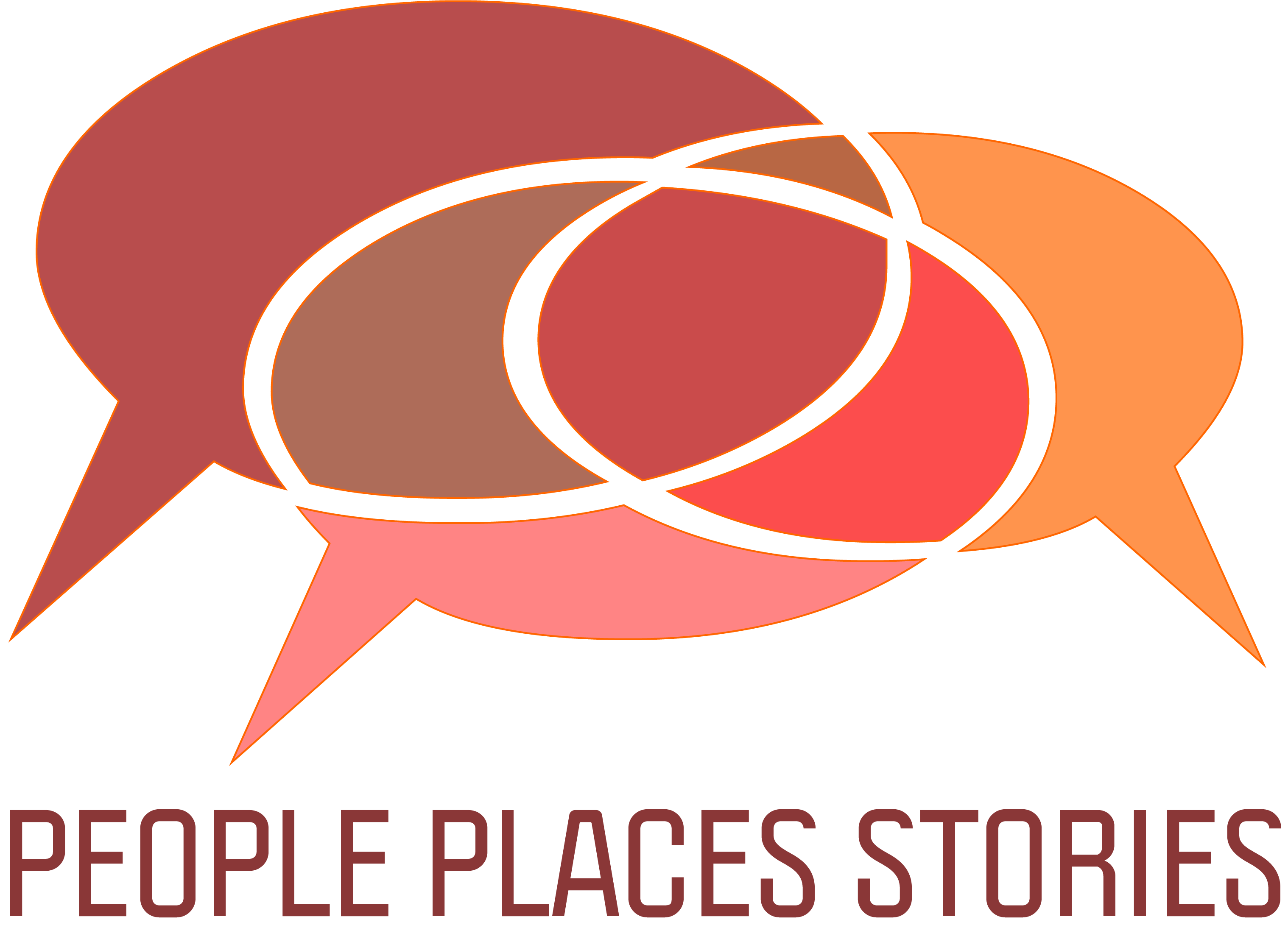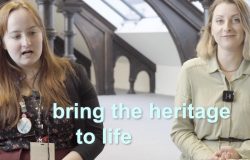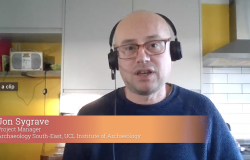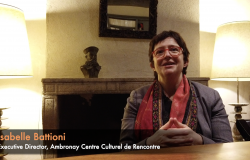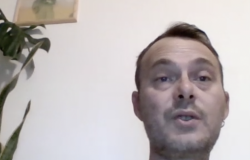Stage 2. Analyse the current situation
Who are the current communities & stakeholders that are already present in an area/linked to heritage? What distinguishes the groups from each other, what do they have in common? How do people relate to local heritage elements? What do they consider as meaningful for their life, what do they want to share? What is personal space, what is common space, what brings them together? What has a personal value, what has a common value?
Heritage Community Development Toolkit
- How can you…
- Partner’s Example
-
Activities
- Stage 2 @ the House Mill
- Learning Materials
- Quiz
-
Competence Development
- Additional Resources
HOW can you identify/create heritage?
Creating heritage is a process of identification, value assessment and recognition … by people feeling related to it. Storytelling can be a great help in this process.
Storytelling is the communication of a real or imagined narrative to one or more people. Stories offer distance and objectivity that can help people to safely speak about subjects which may be too difficult to address directly or personally. They can help to document a heritage experience in a pleasurable way, making it more likely to be passed on and difficult to forget.
The creation and sharing of a shared story of heritage can be an incredibly unifying and humanising act of community cohesion and collective celebration.
Stories share a sense that they are not set in our time or even in our world. They can bring to life another place and time as well as offer a distance from reality which allows participants space to reflect and an opportunity to imaginatively leave their own day to day lives. This escape can break established thought patterns and personal narratives which, if handled with care, can be a powerful intervention to forge new relationships with heritage.
Having a safe and accepting space in which to share personal stories can be an incredibly powerful storytelling process to understand lived heritage.
By using techniques like creative mapping, ‘gentle questions’ (about the community), ‘a day in the life of …’ , people
- can have better conversations
- can reflect on their own community
- can think imaginatively and metaphorically
- can use what they know about the heritage and bring it to life whit imaginary elements
- can position themselves in relation to the heritage
The One – Step – Removed technique involves the use of stories which feel real but are not and the creation of new fictional narratives which resonate with the group and their life experiences. The stories are collaboratively created or developed by the group. The central characters and the issues and decisions they are facing are built up and discussed progressively through various exercises and techniques. A particular focus is given to researching issues, identifying solutions and positive futures for the characters, a task which is much easier to do for an invented character than for oneself!

Maryhill used to be a village but now is an urban district of Glasgow, named after the woman who, in the 18th century, owned a big estate in that area.
The Maryhill Burgh Hall centre, in cooperation with ‘The Storytelling Village Glasgow’, started to work with the local community on a heritage project based on the character of Mary Hill.
Goals:
Finding out more about Mary Hill + unite the community around this character as a piece of their heritage. To reflect on their own community. To use the metaphor of Mary Hill to think about their own position, to consider what is important. To deepen the community’s sense of ownership and connection to the area and its heritage.
This is done by:
- Introducing Mary Hill, the historical figure on which the project is focusing.
- Determining what information is known about Mary Hill so far and consider what could be deduced and imagined.
- Gathering historical information from the community previously unknown to the Burgh Halls
- Introducing the concept of storytelling and gentle personal narrative reflection
- Encouraging participants to think imaginatively and metaphorically about the area of Maryhill, deriving new meaning about their locale.
- Learning about the peoples’ connections, feelings and experiences of their area.
- Gathering testimony for performance material.
Techniques used:
- Creative mapping: picture (draw) the district as a person and ask the participants
- Where is the heart of Maryhill?
- Where do you go to hide?
- Where would the lungs be?
- Where is the mouth, gut, … and why?
- Ask gentle questions: what is your dream community?
- Think imaginatively: create Mary Hill as if she was a character in a story
- What do we know?
- What do we imagine?
- Mapping days of her life
- Painting her as a real person, bringing heritage to life
Possible Actions
- Invite people to tell about what is important for them in their daily life in the community.
- Invite people to tell about their relationship with local heritage.
- Apply storytelling techniques to help articulate/reveal personal meanings and connections with a heritage asset.
- Collect stories that are relevant for the people and the heritage.
- Offer general narrative principles to help people create their personal story.
- Offer the appropriate media for people telling a personal story.
- Help develop a simple structured narrative based on personal story material offered by the people.
- Gather information on the socio-economic and historical context of a heritage community.
- Coordinate the documentation of a community’s assessments of their heritage and its values.
- Help organise a community’s assessment on the meaning and values people relate to cultural heritage elements at a certain place.
- Register the diversity regarding meaning and values in a group of people.
- Mediate between people with different meanings and values.
- Moderate meaning and values identification exercises in a multicultural group.
- Correctly describe heritage phenomena/practices.
- Help people present a transnational or multi-cultural dimension of the heritage they relate to.
Stage 2 at the House Mill
Reflection:- Have your community experienced demographic changes and what are the ways you can engage with the new community members?
- How would you identify and assess the unique values of your heritage community?
Competence in spotlight
- To find the meaning of local heritage for the different groups in the locality.
- To find links between the communities and the place.
- To assess the values of distinct groups in the community for their heritage.
- To organise a value & meaning identification process with community members.
- To analyse a heritage asset/phenomenon with a focus on how it is related to cultural values.
Competence Development Pathway
PPS focuses on building the capacity of heritage communities as a socio-cultural space for creativity, learning, participation & inclusion. Each stage of heritage community development involves either field, organisational or social competences.
We have developed the “PPS Competences & Knowledge-Skills-Attitudes (KSA) reference systems” that will assist you to develop the relevant competence to this stage.
Examples
Commonlands cultural community mapping alpine areas (IT)
250 inhabitants from ten mountain communities in the Val-Grande National Park, a protected area of remarkable natural beauty located in Piedmont, in the north of Italy. November 2016, local mountain communities co-designed and managed cultural and touristic initiatives and enhancing local tangible and intangible heritage. The participants were involved in the community mapping of the most significant cultural assets of their communities, producing the comprehensive Commonlands Map along with 10 individual maps for each of the communities.
Cork Travellers Women's Network (IE)
Missling on the tobar: researched former travelling sites around Cork as part of a project documenting the communities history, leading to an exhibition, awareness raising of travellers living conditions and human rights, and collaboration with other traveller networks.
Faro a Fontecchio (IT)
Workshops on rural development through heritage.
Asociacion Caminos (ES)
Youth organisation working with migrants and storytelling
